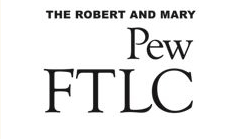Bridging the Gap: Assessing Student Technology Preferences in the Advising Process
Session Location
Eberhard Center 514
Session Start Date and Time
24-8-2011 11:00 AM
Session End Date and Time
24-8-2011 12:00 PM
Session Abstract
The demographics of GVSU students are changing. Faculty and advisors may be un- aware of the disconnection between their approaches to technology (or lack thereof) and how essential technology is to students. Expanding on advising training videos created from a 2010 FTLC grant, this interactive workshop will help faculty and advisors identify and assess the need for evaluating student communication preferences. We will address concrete strategies to implement appropriate levels and types of technology that can enhance the advising process.
Session Description
In the summer of 2010, the Liberal Studies Department, with the help of News and Information Services and an FTLC grant, created a series of advising videos. Advising students who have chosen, or are considering, the Liberal Studies major is a time-intensive and individualized process due to the unique customization and flexibility students have in creating their own Study Plans and Emphasis Areas. These videos, now posted on the Liberal Studies website and accessible 24/7 to students, parents, and faculty/advisors, created a consistent and informative format that offers an introduction to the basic forms, procedures, strategies and suggestions for advising Liberal Studies majors and potential majors. They also contain “mock” advising sessions and FAQs with a student to simulate frequently asked questions and concerns, unique to the major, that typically arise in advising sessions while students are exploring and completing their degree.
In the summer of 2011, the Brooks College of Interdisciplinary Studies and Career Services collaborated in creating video interviews of alumni who utilized intentional and experiential learning components (i.e. service learning projects and internships) while completing their degrees. The purpose of this project was to provide examples for and to help current students learn how to articulate transferrable skills into their careers and increase their employability after graduation.
While both video projects were a useful step toward providing more efficient and accessible information and communication in the advising process, upon assessment of these projects and reflection on the various ways students use other technologies to manage their education, we concluded more work in this area is essential.
This session will examine the possible intersections of various technologies throughout different stages in the advising process at Grand Valley State University. We will provide an overview of four main areas/times in which advisors and students may interact and will explore how different technologies could enhance teachable moments at specific points in the advising process. In addition to video interviews embedded in web pages, we will discuss other technologies such as Wimba Pronto/Classroom, vodcast tutorials, exploration of social media technology and the uses of these in advising. We will facilitate a discussion on the importance of a balance between synchronous and asynchronous communication styles and preferences. We will provide an introduction to the theoretical research for the background, importance of, and timeliness of this topic, as well as resources to explore for further utilization.
Both in the classroom and in the advising process, faculty are “behind” in their understanding and use of such technologies; in essence, there is a gap in communication. This interactive conversation and workshop will address and offer strategies toward bridging this gap.
Bridging the Gap: Assessing Student Technology Preferences in the Advising Process
Eberhard Center 514
The demographics of GVSU students are changing. Faculty and advisors may be un- aware of the disconnection between their approaches to technology (or lack thereof) and how essential technology is to students. Expanding on advising training videos created from a 2010 FTLC grant, this interactive workshop will help faculty and advisors identify and assess the need for evaluating student communication preferences. We will address concrete strategies to implement appropriate levels and types of technology that can enhance the advising process.
